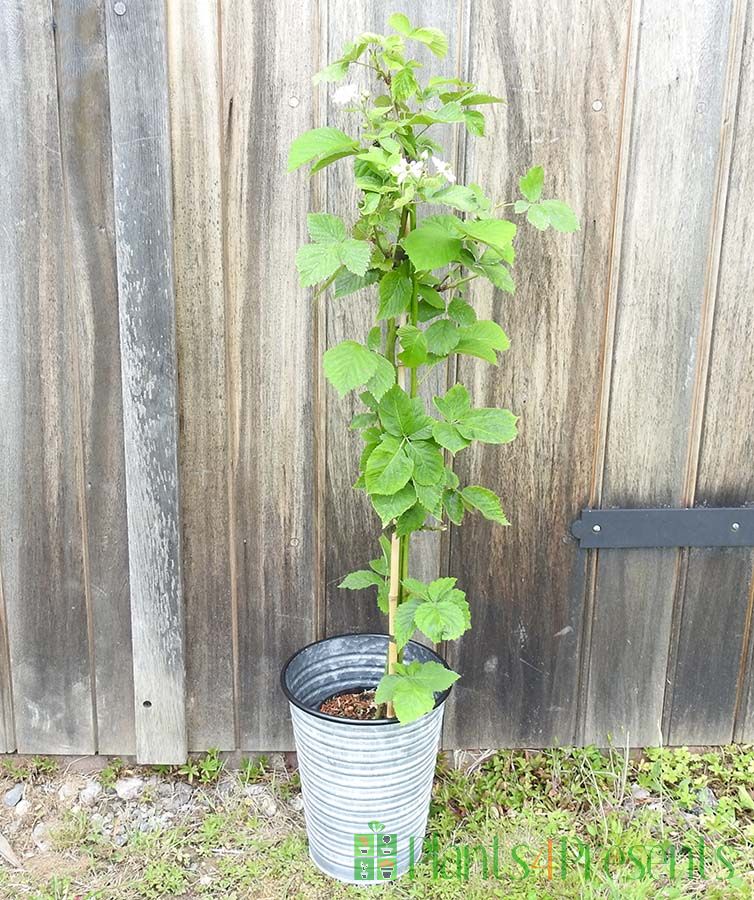Thornless Blackberry
Out of stock
- Domesticated variety of the classic Blackberry
- Next or named delivery just £6
- Delivered gift wrapped and boxed with a handwritten greeting card
Sorry we don’t have any thornless blackberry available at the moment. You can find a wide selection of fruiting plants on our website here.

These instructions are sent with the plant gift
Looking after your Thornless Blackberry
This is a thorn less version of our native blackberry (Rubus fruticosus) producing large sweet berries on furry stems. A super easy-going and rewarding fruit bush for the garden, they will thrive across the UK including in gardens further north but do plant them in a sunny spot to get the sweetest fruits.
Traditionally grown as bush plants they can be grown as cordons up the side of a wall or trellis if you prefer.
Whilst your plant is in a small pot it will need regular watering. Aim to water it heavily and then allow the top of the compost to dry out before watering heavily again. As soon as the chance of frost is past your Blackberry will benefit from being planted out in the garden or potted up in a much larger pot. Add a top dressing of well-rotted manure or other rich compost to help your plant settle in and you may want to replace the pyramid of canes with a longer single cane or trellis as your plant grows.
We expect these young plants to put on plenty more growth this year and the first crop of flowers and fruits either this year or next. Over time your plant will grow into a sizeable bush producing a sizeable harvest each Autumn.
Fresh blackberries are best harvested when they are rich dark purple-black and either eaten fresh or frozen for use in puddings and jams.
Blackberries are particularly vigorous so it is worth pruning and controlling their growth. They can be trained up an arch, pergola, wall or kept as bush but either way the main pruning should be done in the autumn. Prune back hard to one or two main stems at the end of the first year, taking any sideshoots back to just a few cms and shaping the plant into the space you have for it.
Problem solving Blackberries are not greedy feeders but when planting out it is always a good idea to include some nice rich organic matter and again to top dress with compost or well-rotted manure every couple of years in the Spring.






